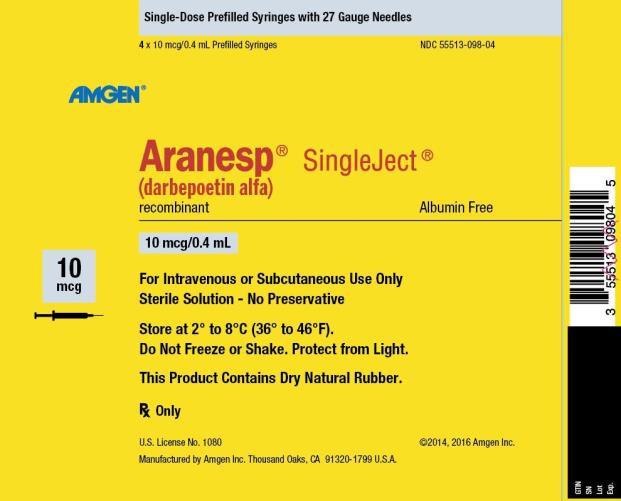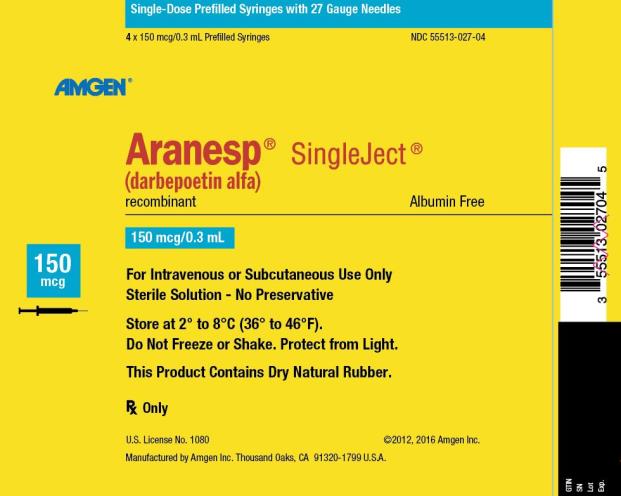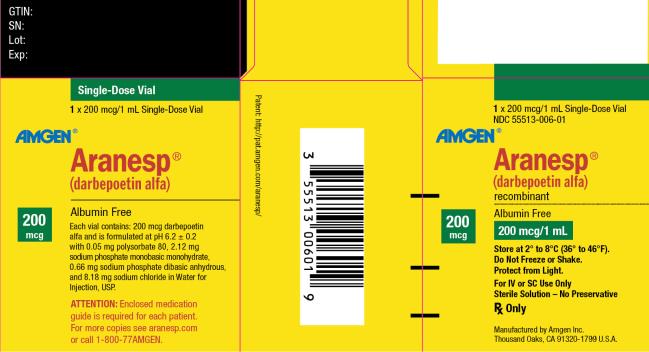Aranesp
What is Aranesp (Darbepoetin)?
Approved To Treat
Related Clinical Trials
Summary: BCD-131 is pegylated darbepoetin beta. This clinical study BCD-131-3 is a randomized, open-label, phase III study of the efficacy and safety of BCD-131 and Mircera used for the treatment of anemia in end-stage chronic kidney disease (CKD) patients on dialysis.
Summary: Patients with kidney failure who require hemodialysis often suffer from anemia (low red blood cell count), heart and blood vessel problems, and a condition involving poor nutrition, inflammation, and hardening of the arteries (called MIA syndrome). Standard treatments for anemia often involve injections and iron supplements. This study aims to see if a newer oral medication, Roxadustat, works bett...
Summary: People with severe kidney failure who need regular hemodialysis treatment often experience several health problems. These include anemia (low red blood cell count), issues with their bone health (sometimes called mineral and bone disease), and mental health challenges like depression and anxiety. They may also have problems with their nerves and muscles. Roxadustat is a newer medicine, taken as a ...
Related Latest Advances
Brand Information
- In controlled trials, patients experienced greater risks for death, serious adverse cardiovascular reactions, and stroke when administered erythropoiesis-stimulating agents (ESAs) to target a hemoglobin level of greater than 11 g/dL [see Warnings and Precautions (5.1)].
- No trial has identified a hemoglobin target level, Aranesp dose, or dosing strategy that does not increase these risks[see Dosage and Administration (2.2)].
- Use the lowest Aranesp dose sufficient to reduce the need for red blood cell (RBC) transfusions [see Warnings and Precautions (5.1)].
- ESAs shortened overall survival and/or increased the risk of tumor progression or recurrence in clinical studies of patients with breast, non-small cell lung, head and neck, lymphoid, and cervical cancers [see Warnings and Precautions (5.2)].
- To decrease these risks, as well as the risk of serious cardiovascular and thromboembolic reactions, use the lowest dose needed to avoid RBC transfusions [see Dosage and Administration (2.3)].
- Use ESAs only for anemia from myelosuppressive chemotherapy [see Indications and Usage (1.2)].
- ESAs are not indicated for patients receiving myelosuppressive chemotherapy when the anticipated outcome is cure [see Indications and Usage (1.3)].
- Discontinue following the completion of a chemotherapy course [see Dosage and Administration (2.3)].
- Injection: 25 mcg, 40 mcg, 60 mcg, 100 mcg, and 200 mcg
- Injection: 10 mcg/0.4 mL, 25 mcg/0.42 mL, 40 mcg/0.4 mL, 60 mcg/0.3 mL, 100 mcg/0.5 mL,
- Uncontrolled hypertension
- Pure red cell aplasia (PRCA) that begins after treatment with Aranesp or other erythropoietin protein drugs
- Serious allergic reactions to Aranesp
- Increased Mortality, Myocardial Infarction, Stroke, and Thromboembolism
- Increased Mortality and/or Increased Risk of Tumor Progression or Recurrence in Patients with Cancer
- Hypertension
- Seizures
- Pure Red Cell Aplasia
- Serious Allergic Reactions
- Severe Cutaneous Reactions
- Seizures
- Pure Red Cell Aplasia
- Serious Allergic Reactions
- Severe Cutaneous Reactions
- Of the increased risks of mortality, serious cardiovascular reactions, thromboembolic reactions, stroke, and tumor progression
- To undergo regular blood pressure monitoring, adhere to prescribed anti-hypertensive regimen and follow recommended dietary restrictions.
- To contact their healthcare provider for new-onset neurologic symptoms or change in seizure frequency.
- Of the need to have regular laboratory tests for hemoglobin.
- Importance of following the Instructions for Use.
- Dangers of reusing needles, syringes, or unused portions of single-dose vials.
- Proper disposal of used syringes, needles, and unused vials, and of the full container.
- Importance of informing healthcare provider if difficulty occurs when measuring or administering partial doses from the Aranesp prefilled syringe. If difficulty occurs, use of other syringes or Aranesp vial may be considered.
Amgen Inc.
One Amgen Center Drive
Thousand Oaks, CA 91320-1799 U.S.A.
U.S. License Number 1080
Patent: http://pat.amgen.com/aranesp/










